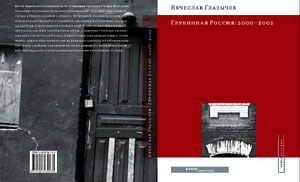|

Once again Russia appears before the world and its own inhabitants
as a vast blank spot on the map. Rumors about recent events in
Moscow and to some extent in St. Petersburg are readily available
to everyone, but only the residents of small towns and settlements
are well aware about events there. All the others know only about
recurrent seasonal mishaps which sometimes develop into disasters.
Images of despair and desolation created by the mass media haunt
the common mentality. A series of expeditions, arranged by the
Center for Strategic Research of Volga Federal District in 2000—2002
under the leadership of the author (an acknowledged expert in
the organization and development of the urban environment, a Professor
at the Moscow Institute of Architecture and a consultant for the
Spatial Development Commission of the Volga Federal District,
as well as a series of project workshops performed by him in regions
of the district) has changed the representation of Russia's remote
areas. Mosaics of the way of life and environmental quality in
the area where 32 million people reside in 15 subjects of federation,
appears much more varied and the difference between settlements
much more striking than one could expect.
Observation of everyday details — from the price of a disco ticket
to the status of town cemeteries — is combined with numerous interviews
and an analysis of available information, interweaving into an
elaborate rug of impressions. A major interest of the researchers
was to discover if the differences are present between settlements
located close to the borders of federation subjects, so one should
not expect comprehensiveness or uniformity in the areas' coverage.
Inaccuracies unfortunately are unavoidable in a study of such
kind; however, the accumulated material is sufficient to destroy
the myth about the provinces as a kingdom of sleep, and about
the sweeping decay of economy and morals.
The major contents of the book are constructed as two parallel
readings. The “Left” book presents collected data about towns
and settlements in alphabetical order. The “Right” book presents
reflection about the town as a vehicle of culture and the fate
of Russian town in particular. Generalization of observations
over two hundreds of towns and settlements during two seasons
of expeditions concludes the empirical discourse of the book.
The key conclusion may be unexpected for many readers: not only
does the principle of municipal government make its way with great
difficulty, but even the role of civil society leaders is often
taken over by local authorities, who attract many of the most
active citizens. Comments to sketches by Afanasy Fet conclude
the book. The sketches, written ten years after the first “perestroyka,”
invoked by the reforms of 1860—1870s, suggest a correspondence
with the post-perestroyka decade of the 1990s. Psychological patterns
show an obvious similarity notwithstanding differences in levels
of development.
|